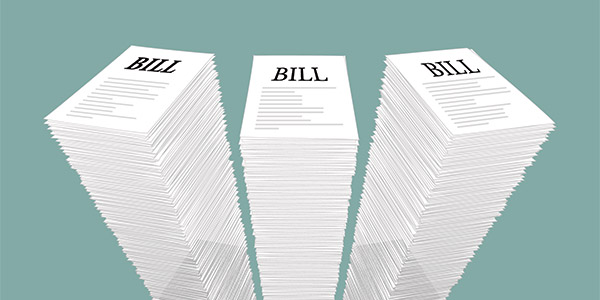No Surprises Act Facing Continued Pressure from Providers

TOPLINES
In the courtroom and in the field, provider interests are continuing their full-court press to undermine elements of the No Surprises Act, the landmark federal legislation enacted earlier this year to shield patients, payers and purchasers from exorbitant and unexpected out-of-network medical bills.
On Sept. 22, the Texas Medical Association filed a new lawsuit to block portions of the act’s final rule. The action followed an earlier legal challenge by the association that resulted in substantial modifications to the arbitration process at the core of the No Surprises Act.
Separately, provider organizations nationwide continue to submit arbitration requests related to the No Surprises Act with new payment disputes in numbers that could conceivably overwhelm the nascent system.
These actions underscore the determination of some hospitals and physician groups — particularly those backed by private-equity firms that rely on the outsized margins produced by out-of-network charges — to preserve the status quo by favorably influencing and/or destabilizing the way charge disagreements are settled.
Early success in protecting patients
The No Surprises Act, which took effect January 1, 2022, shifted the burden of covering out-of-network bills from patient to health insurer. Out-of-network providers are now prohibited from billing patients covered by private insurance an amount greater than the in-network rate for the same service. Instead, they must work with the patient’s insurer to arrive at an agreeable price.
The law was designed to end the egregious practice of subjecting patients to unexpected and often financially devastating charges for out-of-network care, most frequently related to emergency care.
Early evidence suggests the act is having an impact. A recent survey by the national health insurer association, AHIP, and the Blue Cross Blue Shield Association estimated more than nine million potential surprise bills were prevented since January 2022 due to the implementation of the No Surprises Act. Should the trend hold, more than 12 million surprise bills will be avoided this year alone.
Legal challenges
The recent lawsuit by the Texas Medical Association, like its initial complaint filed late last year, seeks to alter the process by which arbitrators calculate payments to resolve disagreements between health care providers and insurers. Specifically, the lawsuit aims to reduce reliance on a region’s median inpatient rate currently used to determine a fair price for services under dispute. Known as the qualified payment amount, or QPA, providers have criticized these rates as deflated, opaque and determined solely by health plans.
In February, a federal judge in the Eastern District of Texas agreed with the
medical association that the federal agencies responsible for implementing the No Surprises Act — the departments of Health and Human Services, Labor and Treasury — had erred in instructing arbitrators to give extra weight to the QPA. Consequently, the act’s final rule released August 19 contained significant modifications, most notably a downgrade of the QPA’s role in determining renumeration. The QPA is no longer the central, presumptive amount for achieving an equitable price, but merely a starting point that can be further influenced by other factors.
The most recent Texas Medical Association suit essentially argues that the agency didn’t go far enough in diluting the role of the QPA and that the median rate continues to represent an “unmistakable thumb on the scale” when it comes to resolving disputed charges.
Flooding the zone
PBGH and others have argued that downgrading the role of the QPA will likely result in wide variation in arbitration outcomes since it will force individual arbitrators to exercise their own judgment when considering factors as disparate as market rates, clinician training and experience, facility teaching status and whether participants engaged in good faith efforts to resolve disputes.
Supporters of the original legislation’s language contend that a lack of arbitration predictability will lead to a greater use of the dispute resolution process as parties “shop” for arbitrators most likely to rule in their favor. While it’s too early to know the extent of settlement variability, it is clear that the volume of disputed cases is rising rapidly.
Since the April 15 go-live of the act’s independent dispute resolution process, more than 275,000 disputes were initiated. That’s substantially more than the 17,000 the government had previously estimated would be filed in an entire year, and anecdotal evidence suggests the number of new disputes continues to grow.
In recent letters to the heads of the agencies responsible for implementing No Surprises Act, the Coalition Against Surprise Medical Billing noted that the independent dispute resolution process was designed to “be used sparingly as a backstop in unique cases where the plan and provider cannot reach an agreement on what constitutes a fair reimbursement.”
That is clearly not what is happening.
The letters also urge the agencies to stay the course and closely monitor both the volume of arbitration cases and their outcomes to ensure the No Surprises Act lowers costs as intended.
Ongoing vigilance
Going forward, PBGH, its allies at the Coalition Against Surprise Billing and others will continue to closely monitor the implementation of the No Surprises Act with an eye toward the possibility of further influencing future rulemaking to ensure the act achieves its objectives of ending surprise billing and holding down health care costs for patients and purchasers.



